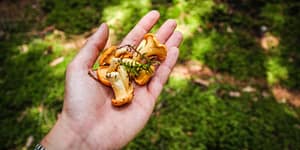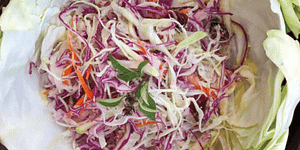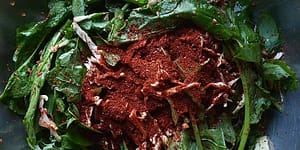Fire Cider: A Healing, Warm Tonic

“It is more important to know what kind of person has a disease than to know what kind of disease a person has.” —Hippocrates
Drawing on her decades of clinical experience and her extensive research, Dr. Jill Stansbury offers an unparalleled range of herbal formulas in her five-volume set, Herbal Formularies for Health Professionals.
For each formula, she offers a brief explanation of how the selected herbs address the specific condition, and sidebars and user-friendly lists help readers quickly choose which herbs are best for specific presentations. The goal in offering such extensive and thorough listings of possible herbal therapies is to demonstrate and model how to craft herbal formulas that are precise for the patient, not for the diagnosis.
The following recipe for Fire Cider, a digestive aid, is from Herbal Formularies for Health Professionals, Volume 1. It has been adapted for the web.
 Making Fire Cider
Making Fire Cider
Vinegars macerated with hot spicy herbs are sometimes referred to as fire cider due to the hot fiery flavor and the apple cider vinegar base. Fire ciders may include ginger, horseradish, turmeric, garlic, onions, and hot peppers macerated in apple cider or other quality vinegar. This formula combines fire cider with the digestive bitter Artemisia and a small amount of sweetener such as honey. Use as an aperitif before meals.
Ingredients
- 1⁄2 cup (120 ml) cold water or hot herbal tea
- 1 tablespoon apple cider vinegar (or herbal vinegar made with cayenne or a bitter herb)
- Maple syrup or honey, to taste
- 20 drops Artemisia tincture
- Dash fresh ground black pepper (optional)
Instructions
This beverage can be prepared in water or tea as desired.
- Add the vinegar, maple syrup, and Artemisia to the chosen liquid and stir well.
- Add pepper if it can be tolerated. Sip over a span of 10 to 15 minutes prior to all meals.
Recommended Reads
Recent Articles
Don’t know where to start for foraging wild plants? Read on for the information you need to begin foraging on your own: where to do it and how to be safe.
Read MoreEasy rainbow coleslaw! Transform your salad game with this colorful recipe. It is surprisingly packed with flavor and is a great addition to your repertoire.
Read MoreIf you love tomatoes, you probably already know just how many varieties of these summertime staples there are. But do you know what makes each one unique?
Read MoreNeed a new twist on kimchi? Look no further than this wild green kimchi! Experiment with what you have, anything from the mustard family will work extremely well.
Read MoreAppetizers, meze, tapas . . . whatever the name, these small plates symbolize hospitality. Every culture has a unique collection of dishes to share. Here are our favorite savory bites to enjoy before a meal. Serve a few together for a vibrant lunch or dinner. In Chile, Clove, and Cardamom explore mouth-watering recipes from the…
Read More








